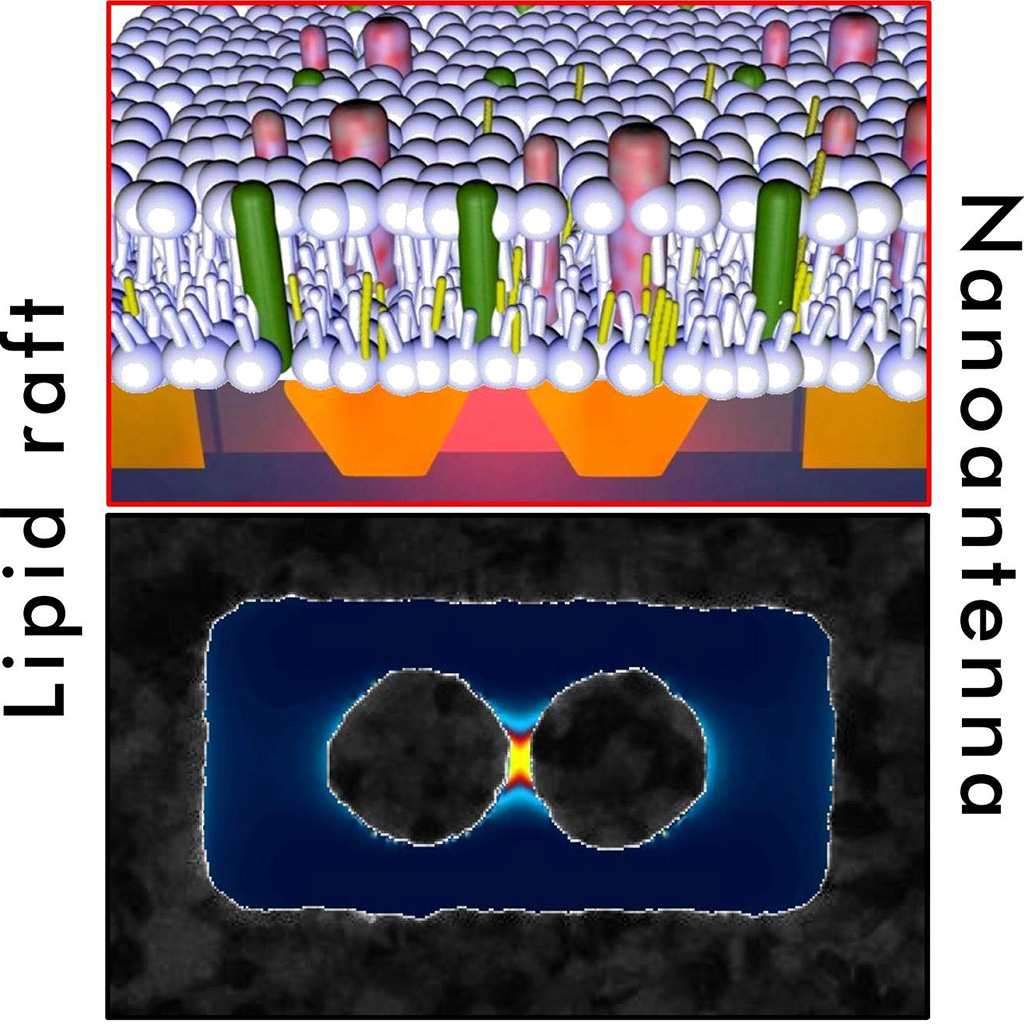An ultimate challenge in biology is to understand the relationship between structure, function and dynamics of biomolecules in their natural environment: the living cell. Take as example the membrane that surrounds all living cells. Once believed to be a simple lipid bilayer that separates the interior from the exterior of the cell, it is now clear that the cell membrane is a highly complex, versatile, and essential signaling interface. Importantly, its function is crucially governed by the compartmentalization – in space and time – of a multitude of different molecules. However, our understanding on how the cell membrane dynamically organizes all these molecules to perform its function has been challenged by the lack of non-invasive techniques that provide access to the small spatial dimensions involved (the nanometer scale) in a dynamic fashion.
Optical nano-antennas are metallic nanostructures that concentrate light into bright nanoscopic hotspots. They can be viewed as nano-sources of illumination and therefore could be potentially used to visualize dynamic processes in living cells with nanometer resolution. In 2017, we designed a novel type of in-plane antennas and exploited them to monitor the diffusion of individual lipids on biological membranes. By using antennas of different gap sizes (down to 10nm in size), we revealed the existence of nanoscopic domains of lipids and cholesterol. These domains are as small as 10nm in size, and highly transient, with characteristics lifetimes around 100 microseconds. The existence of such nanodomains in living cells, also known as lipid rafts, have been predicted theoretically but never observed experimentally. Lipid rafts play a crucial role in many cellular processes that include signal transduction, protein and lipid sorting, and immune response among others. Understanding their formation, biophysical properties and relating their structure to their functional role are of paramount interest. Our nanoantenna breakthrough design provides an encouraging outlook to investigate the dynamics and interactions of lipids and raftassociated proteins.
References
